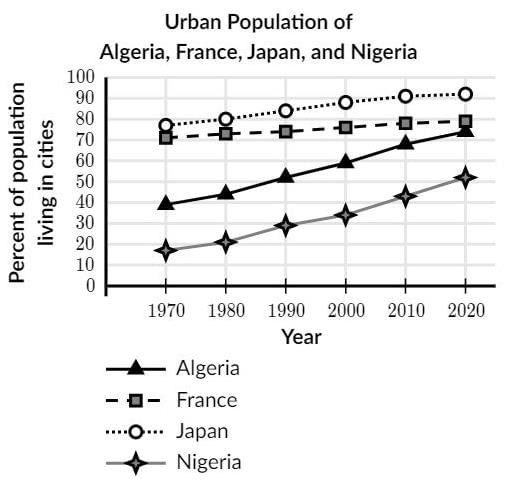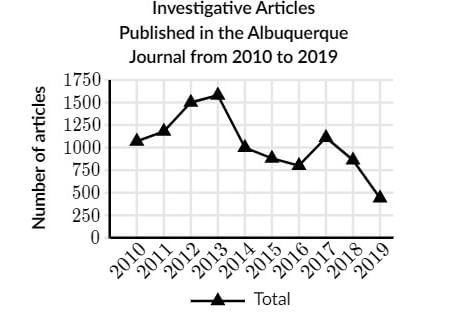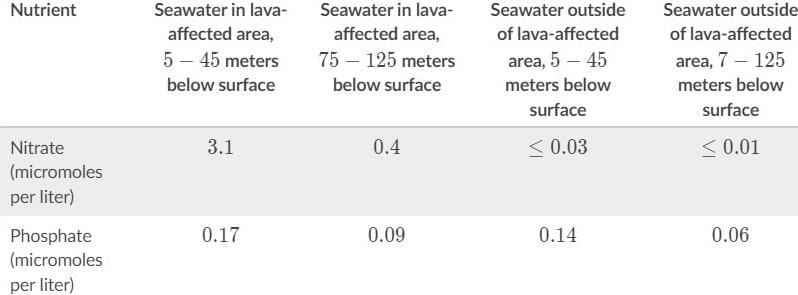Command Of Evidence Test-1 - SAT MCQ
5 Questions MCQ Test - Command Of Evidence Test-1
The share of the world's population living in cities has increased dramatically since 1970, but this change has not been uniform. France and Japan, for example, were already heavily urbanized in 1970, with 70% or more of the population living in cities. The main contributors to the world's urbanization since 1970 have been countries like Algeria, whose population went from ______

Which choice most effectively uses data from the graph to complete the assertion?

Investigative journalists research and report about fraud, corruption, public hazards, and more. The graph shows the number of investigative articles published in the Albuquerque Journal newspaper from 2010 to 2019. According to an analyst, although the number of investigative articles published in this newspaper has varied significantly over the period shown, the number overall has fallen since 2010.

Which choice most effectively uses data from the graph to justify the underlined claim?

Correlations Between Congestion Ratings and Features of the Crowd in Raters' Immediate Vicinity

Researcher Xiaolu Jia and colleagues monitored individuals' velocity and the surrounding crowd density as a group of study participants walked through a space and navigated around an obstacle. Participants rated how congested it seemed before the obstacle, after the obstacle, and overall, and the researchers correlated those ratings with velocity and density. (Correlations range from ?1 to 1, with greater distance from 0 indicating greater strength). The researchers concluded that the correlations with velocity are stronger than those with density.
Which choice best describes data from the table that support the researchers' conclusion?

Average Nitrate and Phosphate Concentrations in Seawater after Volcanic Eruption

After a volcanic eruption spilled lava into North Pacific Ocean waters, a dramatic increase of diatoms (a kind of phytoplankton) near the surface occurred. Scientists assumed the diatoms were thriving on nutrients such as phosphate from the lava, but analysis showed these nutrients weren't present near the surface in forms diatoms can consume. However, there was an abundance of usable nitrate, a nutrient usually found in much deeper water and almost never found in lava. Microbial oceanographer Sonya Dyhrman and colleagues believe that as the lava plunged nearly 300 meters below the surface it dislodged pockets of this nutrient, releasing it to float upward, given that ______
Which choice most effectively uses data from the table to complete the statement?
Comfort Ratings and Temperature-Adjustment Preferences from One Survey

Nan Gao and her team conducted multiple surveys to determine participants' levels of comfort in a room where the temperature was regulated by a commercial climate control system. Participants filled out surveys several times a day to indicate their level of comfort on a scale from ?3 (very cold) to +3 (very hot), with 0 indicating neutral (neither warm nor cool), and to indicate how they would prefer the temperature to be adjusted. The table shows three participants' responses in one of the surveys. According to the table, all three participants wanted the room to be cooler, ______
Which choice most effectively uses data from the table to complete the statement?














